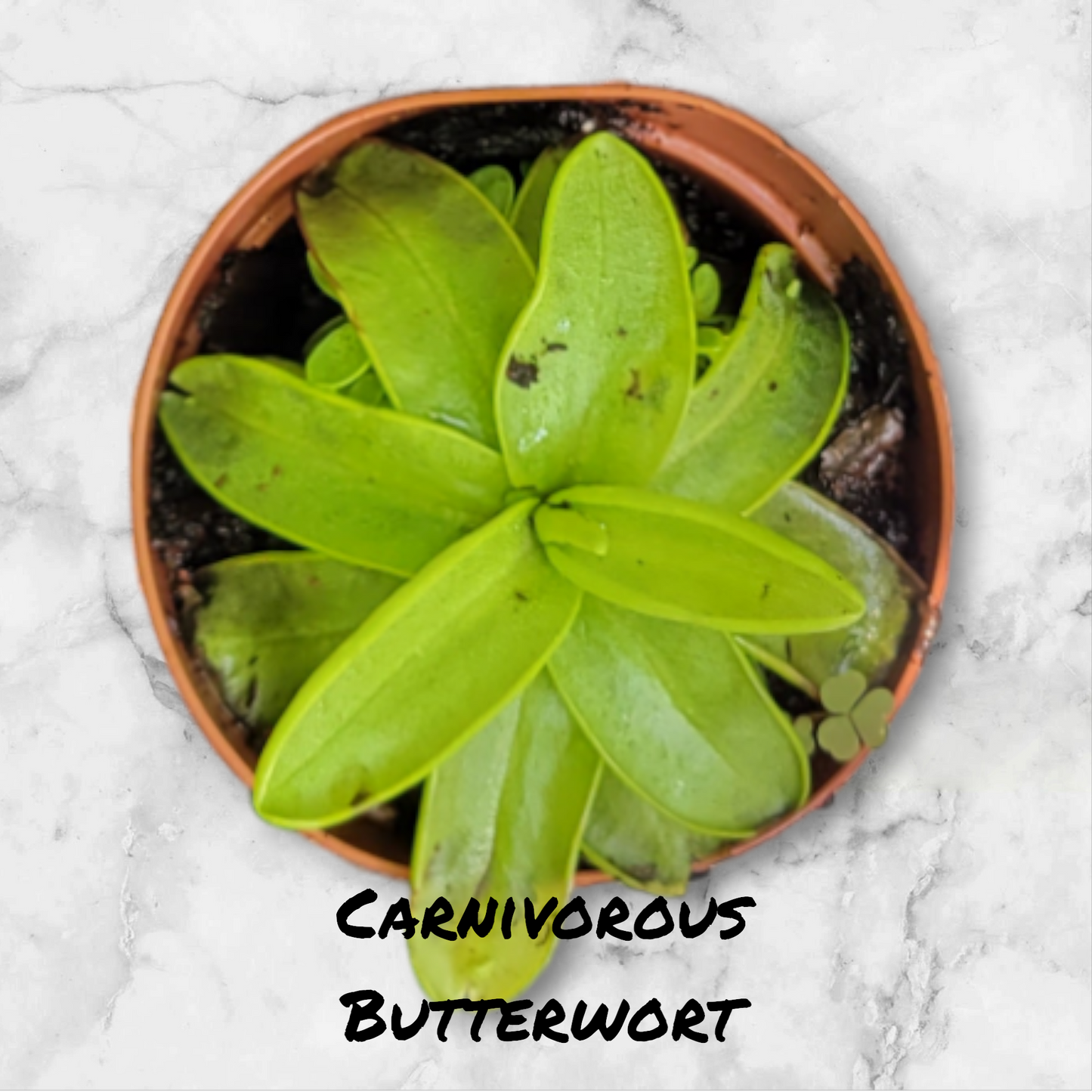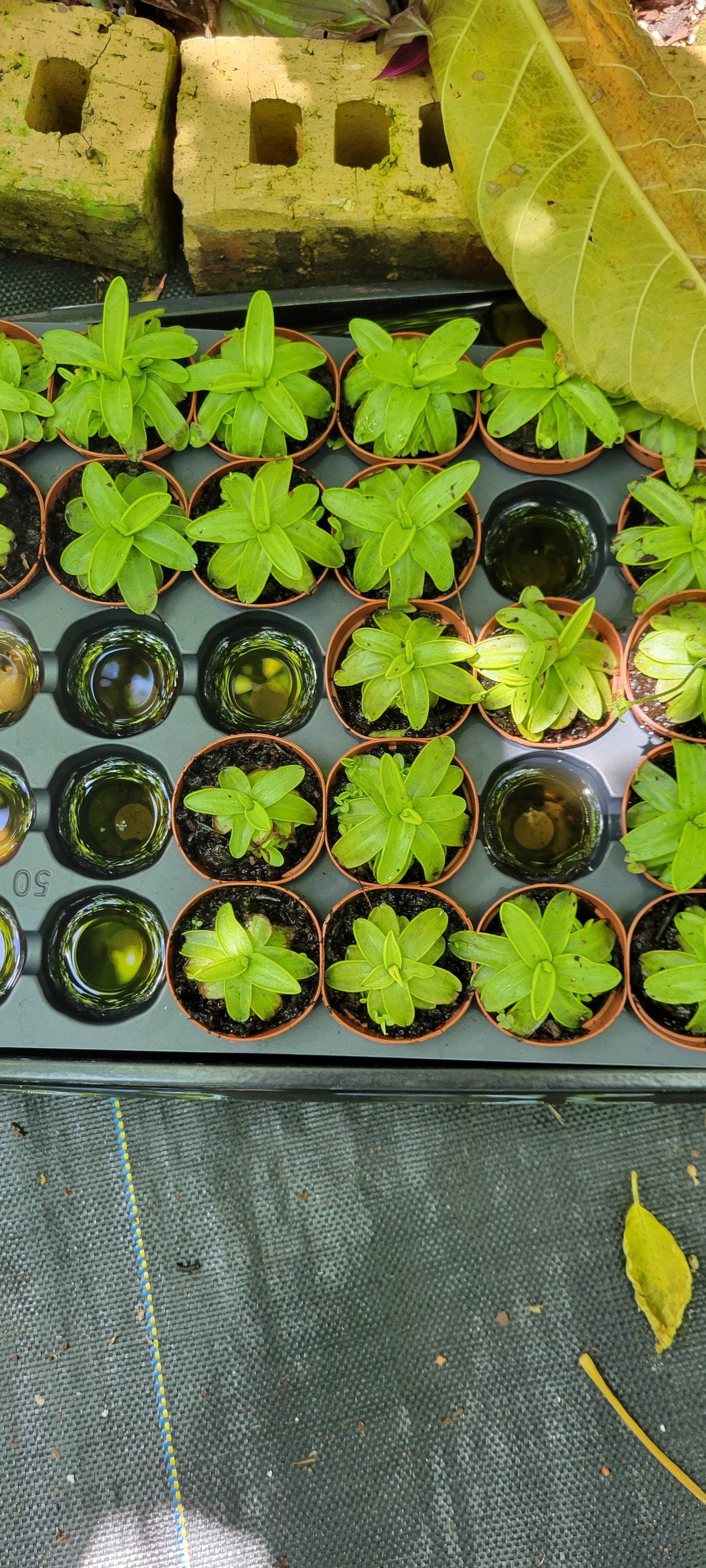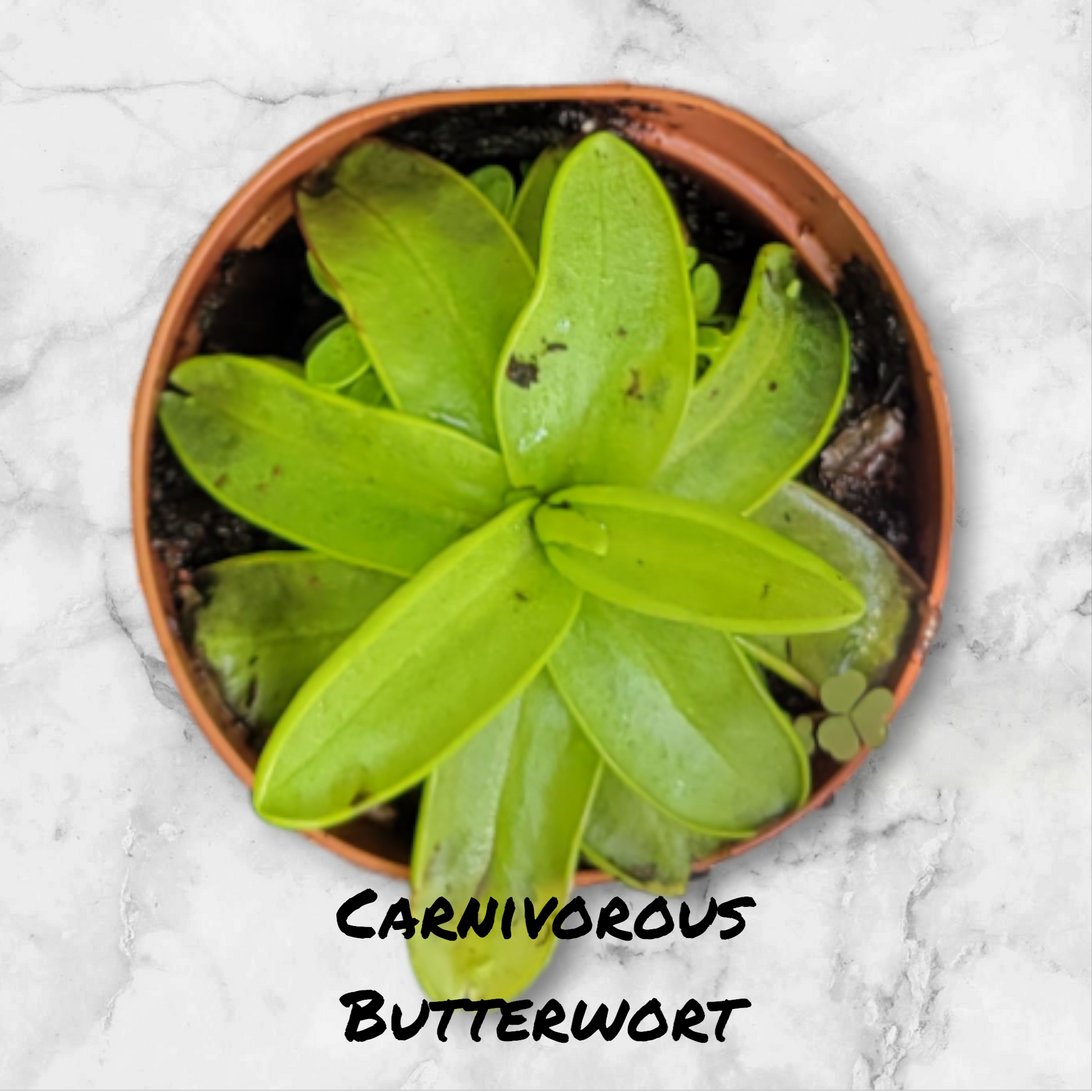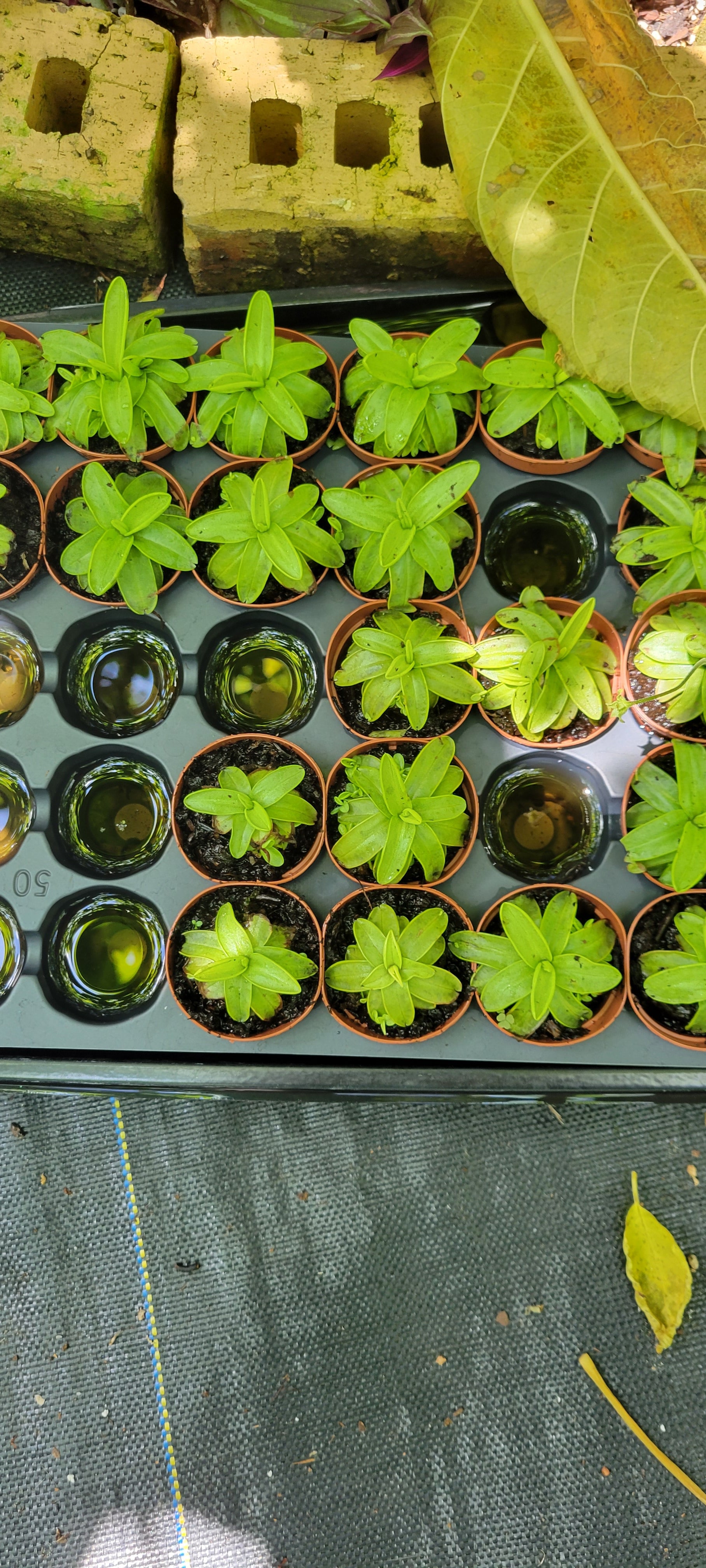Untitled Jul28_20:08
Untitled Jul28_20:08
Couldn't load pickup availability
Butterworts, belonging to the genus Pinguicula, are a fascinating group of carnivorous plants known for their unique adaptations to thrive in nutrient-poor environments. These plants are distributed worldwide, with over 80 species recognized, each exhibiting various colors, sizes, and growing habits.
One of the distinguishing features of butterworts is their leaves, which are typically broad, flat, and covered in glandular hairs that secrete a sticky mucilage. This sticky substance serves as a trap for unsuspecting insects looking for a landing spot. When an insect lands on the leaf, it becomes stuck in the mucilage, triggering the leaf to curl around the prey, forming a temporary "trap." The trapped insect is then slowly digested by enzymes secreted by the plant, allowing the butterwort to absorb essential nutrients like nitrogen and phosphorus that are scarce in their natural habitats.
Butterworts have developed a clever mechanism to attract prey. They often produce colorful and showy flowers that range from delicate pinks and purples to vibrant yellows and whites. These flowers not only enhance the plant's aesthetic appeal but also serve to lure pollinators, such as bees and butterflies, to aid in reproduction.
In their native habitats, butterworts can be found in a variety of environments, including wetlands, bogs, rocky outcrops, and sandy soils. They have adapted to survive in harsh conditions by developing specialized mechanisms for capturing and digesting prey, ensuring their continued growth and reproduction.
Cultivating butterworts can be a rewarding experience for plant enthusiasts interested in carnivorous plants. They are relatively low-maintenance compared to some other carnivorous species and can be grown successfully indoors or outdoors, depending on the species and local climate conditions.
Overall, butterworts are remarkable plants that showcase the diversity of strategies that have evolved in the plant kingdom to adapt to challenging environments. Their carnivorous nature and beautiful appearance make them a popular choice among plant collectors and enthusiasts worldwide.
Share



